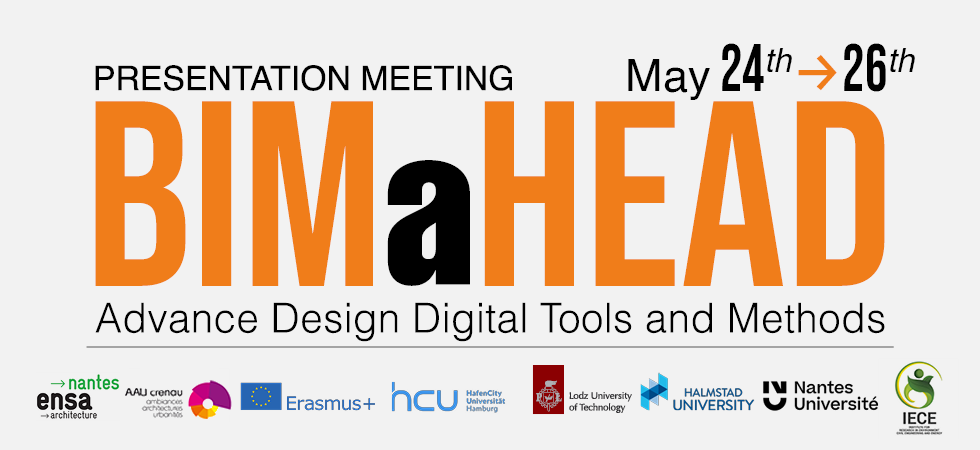
BIMaHEADThe BIMaHEAD project is a European initiative that aims to create new pedagogical and operational approaches to architectural design. It aims to simplify time-consuming tasks so that architects can focus on their true added value.The goal of our framework within the BIMaHEAD project is to promote tools that provide architects with solid arguments for developing more inclusive, sustainable projects by assisting them in the most complex phases.
The project brings together five partners from five different EU countries : France, Germany, Sweden, Poland and the Republic of North Macedonia. The National School of Architecture of Nantes (ENSAN) is the promoter of the project. Swedish University HalmStad (HU) is a partner recognized for its research in innovation. The Private Institute for Research in Environment, Civil Engineering and Energy (IECE) of Skopjé (North Macedonia), created by a company of engineers and architects, which has developed activities in research, training and consultancy. HafenCity University of Hamburg (HCU), specialized in architecture, urban projects and civil engineering; the research carried out there and the training provided there are concerned with what the cities of tomorrow will be like. The Faculty of Civil Engineering, Architecture and Environmental Engineering of the Polytechnic University of Lodz (TUL), very active internationally and whose excellence is recognized.
To oversimplify, we could say there are two approaches to the project.
The first is a sequential approach, while the second is a consequential approach. To complete the BIM in the framework of the BIMaHEAD project, we propose the acronym DIM, which stands for Design Innovative Method. The Abita+ brick, which is installed in Grasshopper, solves automatic definition of housing organizations based on structural and typological data from investment brief. The brick can be designed with an environmental focus or with price ratios, qualitative factors, or any other element that adds value to the project.
The environment was redeveloped to be better integrated into the design work environment after being written for the first time in 2001 in Nantes thanks to the industrial innovation prize awarded by the French Ministry of Industry at the time, (but it was too far ahead of its time). Abita+ provides an interactive design system, multiple solutions rather than one, a shift in skill areas, and integration into the design workflow. The development of the Abita+ modules began with a lengthy examination of architects' design practices and the extraction of knowledge that has become intuitive and operates very quickly in the evaluation of sketching results. To distinguish relevant results from others, this knowledge had to be made expressly stated. As a result, the Abita+ modules include a solver that generates thousands of plausible answers and a gatekeeper that filters out the answers deemed irrelevant. The results are then presented in an interactive format for human evaluation. |

